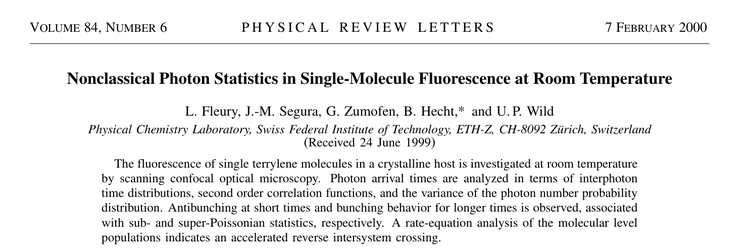Nonclassical Photon Statistics in Single-Molecule Fluorescence at Room Temperature. L. Fleury, J. Segura, G. Zumofen, B. Hecht and U. P. Wild in Phys. Rev. Lett. 84:1148 (2000).

Reports the antibunching of a single molecule (concretely, a single terrylene molecule in a p-terphenyl crystal) at room temperature. In the words of the Authors:
quantum effects can be investigated using a desktop-scale apparatus at ambient conditions
This became technically possible by thwarting the rapid photo-bleaching of their particular combo.
They see a neat and clean small-time antibunching, as well as bunching elbows due to what they call "intersystem crossing" (a third level).
They rely on Reynaud's method[1] to compute long-time delay correlations, and give quite some detail about the actual procedure (e.g., see their Fig. 3 plotting binning events).
Despite a more complex sketch for the model assumed—featuring loops and sophisticated level structures—

they actually use the standard bi-exponential $g^{(2)}(\tau)$ model from three states[2]

There is also a Section on sub/super-Poissonian statistics (Fig. 4).